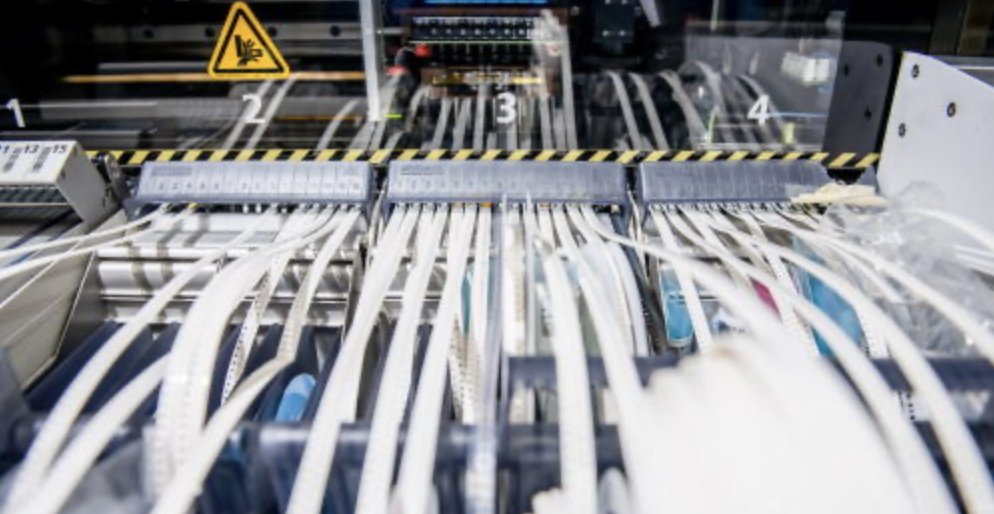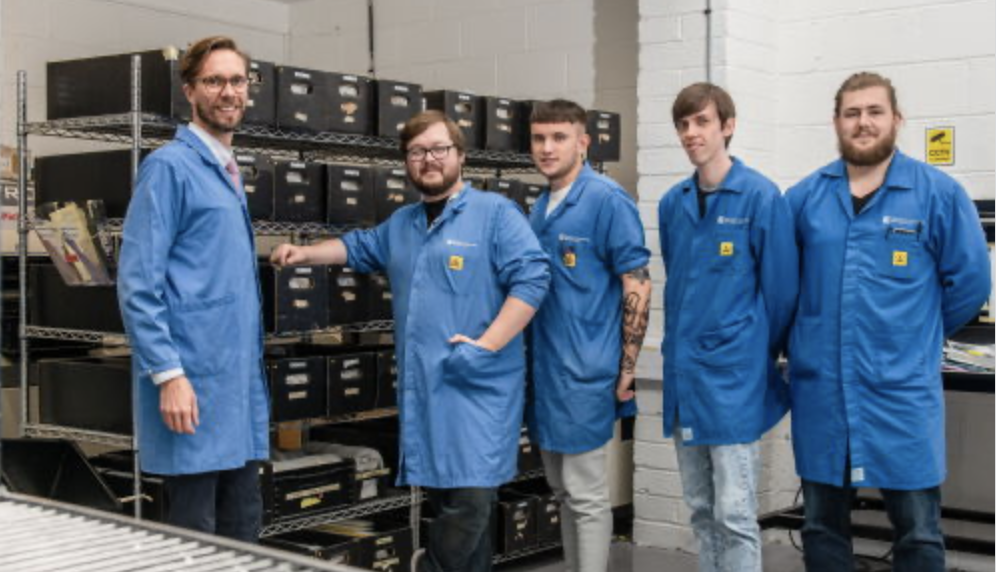Thank you to WMG for this fantastic case study. Read more to find out how EAS strive to do business better.
Our Business
Electronic Assembly Services Ltd (EAS) are a leading Printed Circuit Board (PCB) assembly manufacturer, known for their ultra-fast turnaround. Part of the Express Circuits Group, EAS work with customers in a variety of fast-paced industries, from motorsport to consumer electronics, where developing and testing prototypes quickly is vital to stay ahead of the competition.
Why did you need to innovate?
In order to create opportunities for growth while continuing to satisfy the demands of a thriving industry, EAS’ senior management team decided they needed to review their processes or consider moving to a bigger site. Dan Barber, Quality Manager at EAS, said: “One of the company’s strategic goals is to double our turnover within the next five years. But as we grow, we need to put things in place to ensure we continue to meet our customers’ tight timeframes. Rather than go through the costly process of relocating, we wanted to make better use of the space we have.”

Enthusiastic to change the way the firm worked, Dan had encouraged a number of shop-floor staff to undertake a Business Improvement Techniques NVQ. As part of the qualification, staff were tasked with identifying areas for improvement in the factory. One of the first opportunities they identified was to establish a stock management system that would allow them to respond to customer needs efficiently and stay competitive in a fast-paced industry with tight turnarounds.
Meeting customers’ needs means holding a wide variety of capacitors and other components in stock, which takes up a lot of space and brings with it a certain number of other challenges. Bulk buying components on large reels helped EAS keep unit costs low and pass savings onto the customer, but without an effective stock management system, it was not easy to identify whether stock reels were in use somewhere in the factory, or if they had run out completely and needed to be reordered.
Until recently, management of their inventory relied on the ‘gut feeling’ of experienced staff to judge appropriate levels. This had worked well for the organisation for around ten years, but the team realised that increasing visibility of stock levels would help improve purchasing decisions, while also reducing the footprint of the stock area on the shop floor.
A current student on the Applied Engineering Programme, Dan had previously been introduced to SME research work on Industry 4.0 and wanted to explore this as a potential solution. The team in the WMG SME Group were able to advise and help on implementing an effective stock management system applying the principles of digital manufacturing.
How did you do it?
EAS were able to access a package of support via our Digital Innovation for Manufacturing (DI4M) programme, which is underpinned by funding from WMG Centre HVM Catapult. Our digital transformation experts, led by James Black, Technology Transfer Engineer at WMG, worked with Dan and the management team to understand their challenge.
James said: “Initially, we did a walkthrough of their factory and identified some quick fixes to help improve their visibility of stock. Then, we looked at each source of demand data throughout the business, built a bespoke data model to tie it all together and conducted our demand analysis. This was quite a complicated process because their wide customer base requires in-depth analysis of multiple disparate data sources, but Dan and the team’s enthusiasm really helped push this along.”
We took 12 months of EAS’ order data and analysed it using a demand segmentation tool, developed by our Supply Chain Research Group. This enabled James and EAS to gain a deeper understanding of demand patterns and identify ways to plan purchasing better.
The impact
The initial analysis allowed 70 lines of unnecessary stock to be removed, and a simple colour-coding system to manage stock has created a valuable opportunity to decrease the stock area footprint, and enable faster turnaround times to meet customer demand.
By understanding where demand is coming from, EAS could also set standard reorder points for stock, and allowing them to gain better prices from suppliers.
“The core benefit has been increased awareness and knowledge,” Dan commented. “We’re smarter about how we use stock and more efficient. The guys on the shop floor are really behind this project and are driving it forward.”

EAS are now looking at implementing a high-level digital transformation strategy to help them reach their target of doubling their turnover. They are working with James and the SME Group on developing an application for a Knowledge Transfer Partnership (KTP) to enable this.
Dan reflects: “This project was just the start. There is a huge opportunity for us to do more in this space, and collaborate with our sister companies to create a streamlined smart factory solution. I really valued the knowledge and openness of James and the team at WMG. I know I’ll get good honest advice, and he will work with us to ensure we find a solution that’s right for us.”















